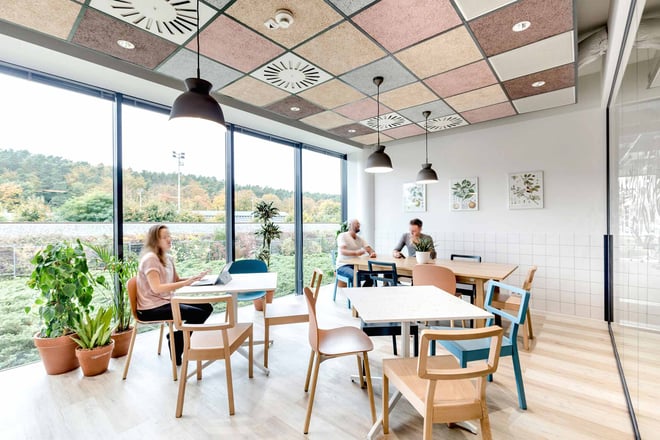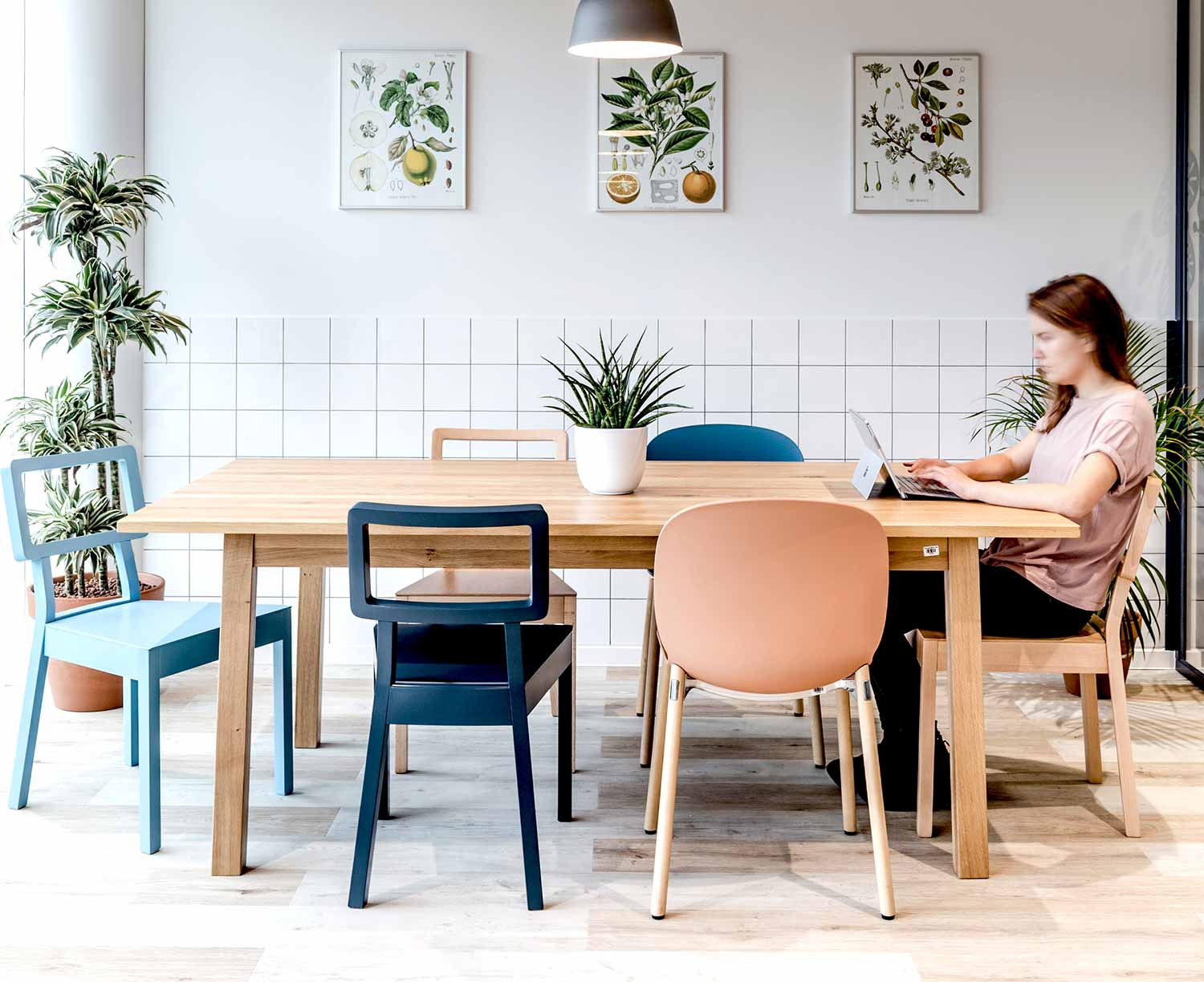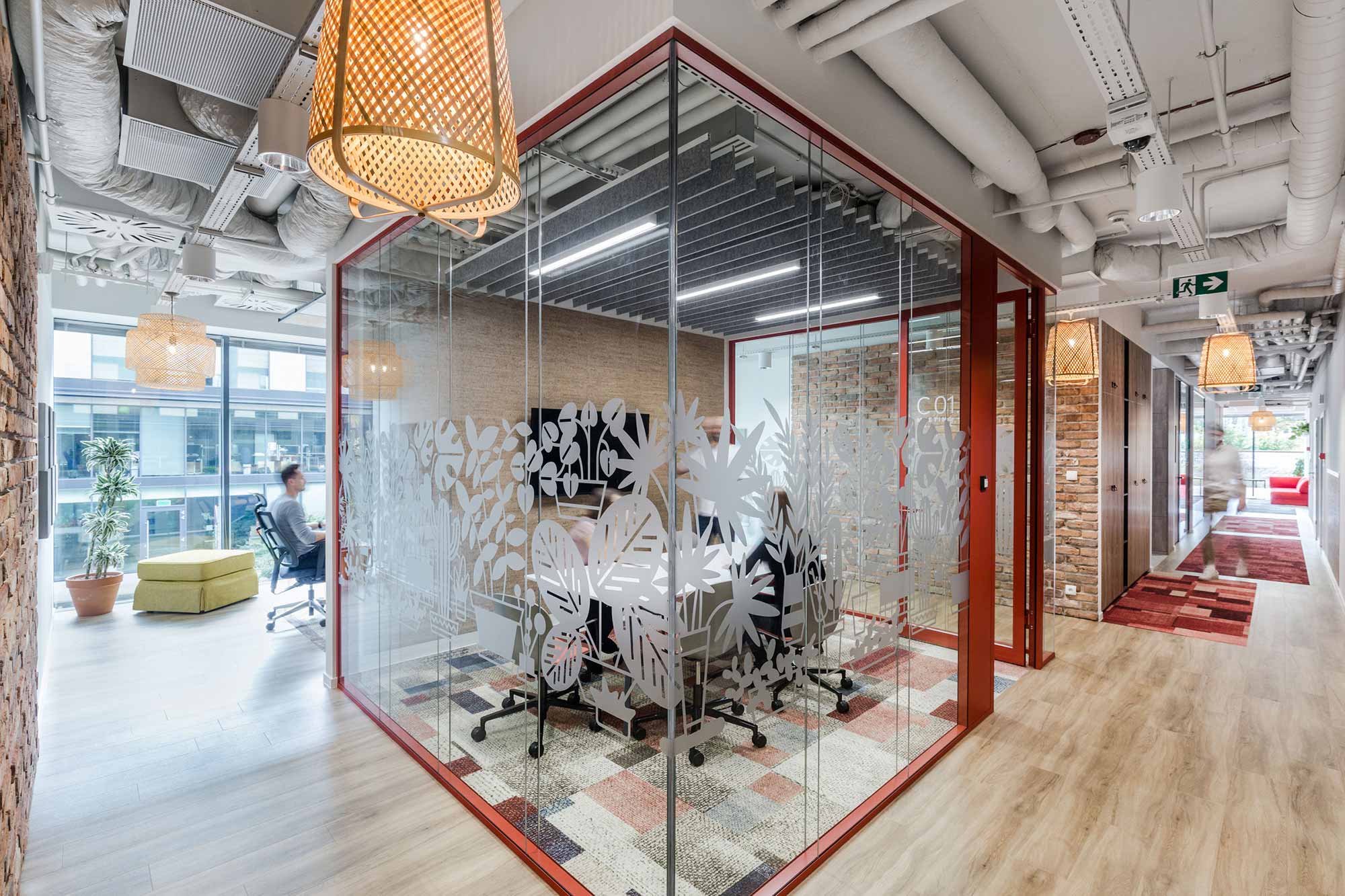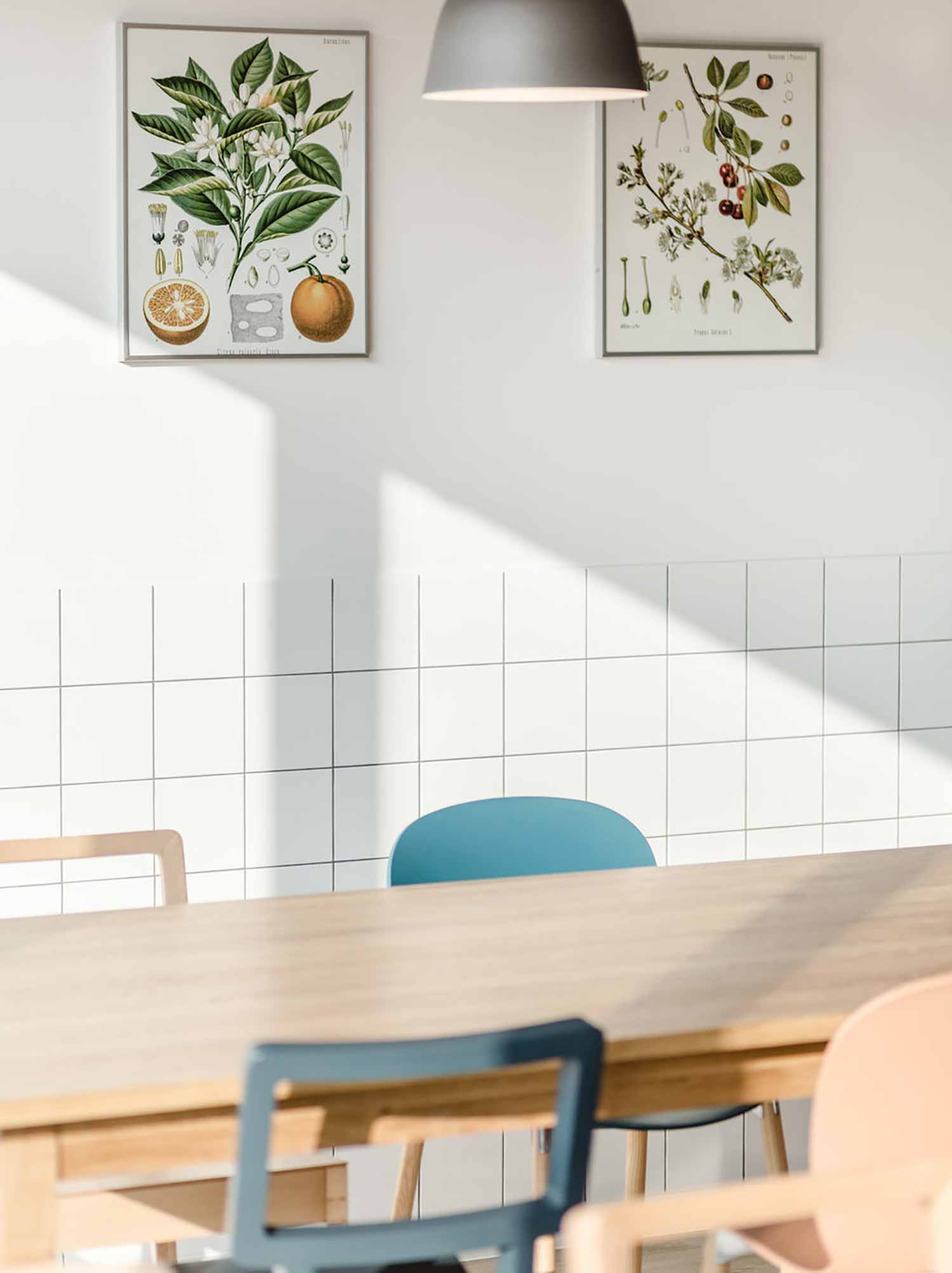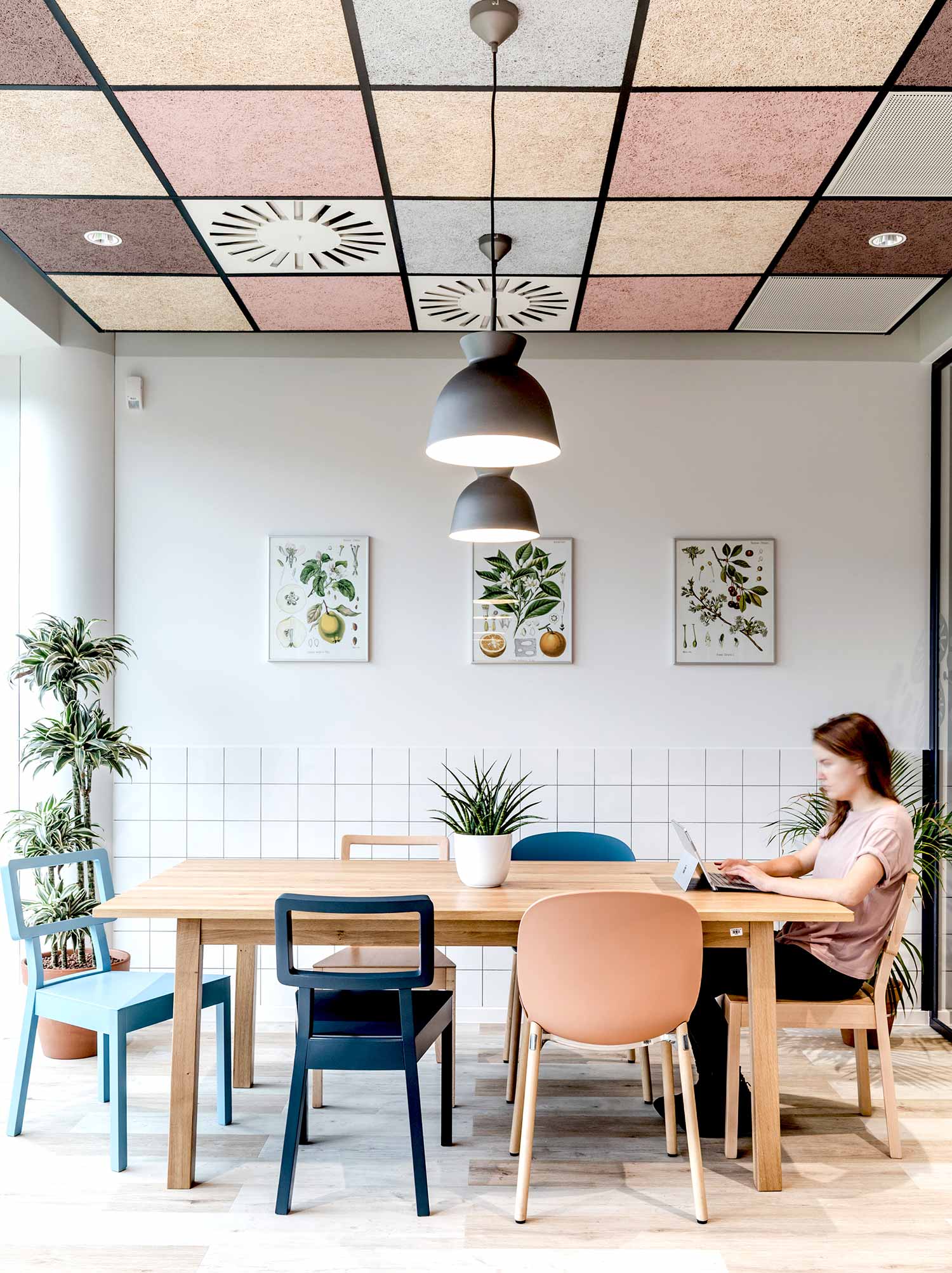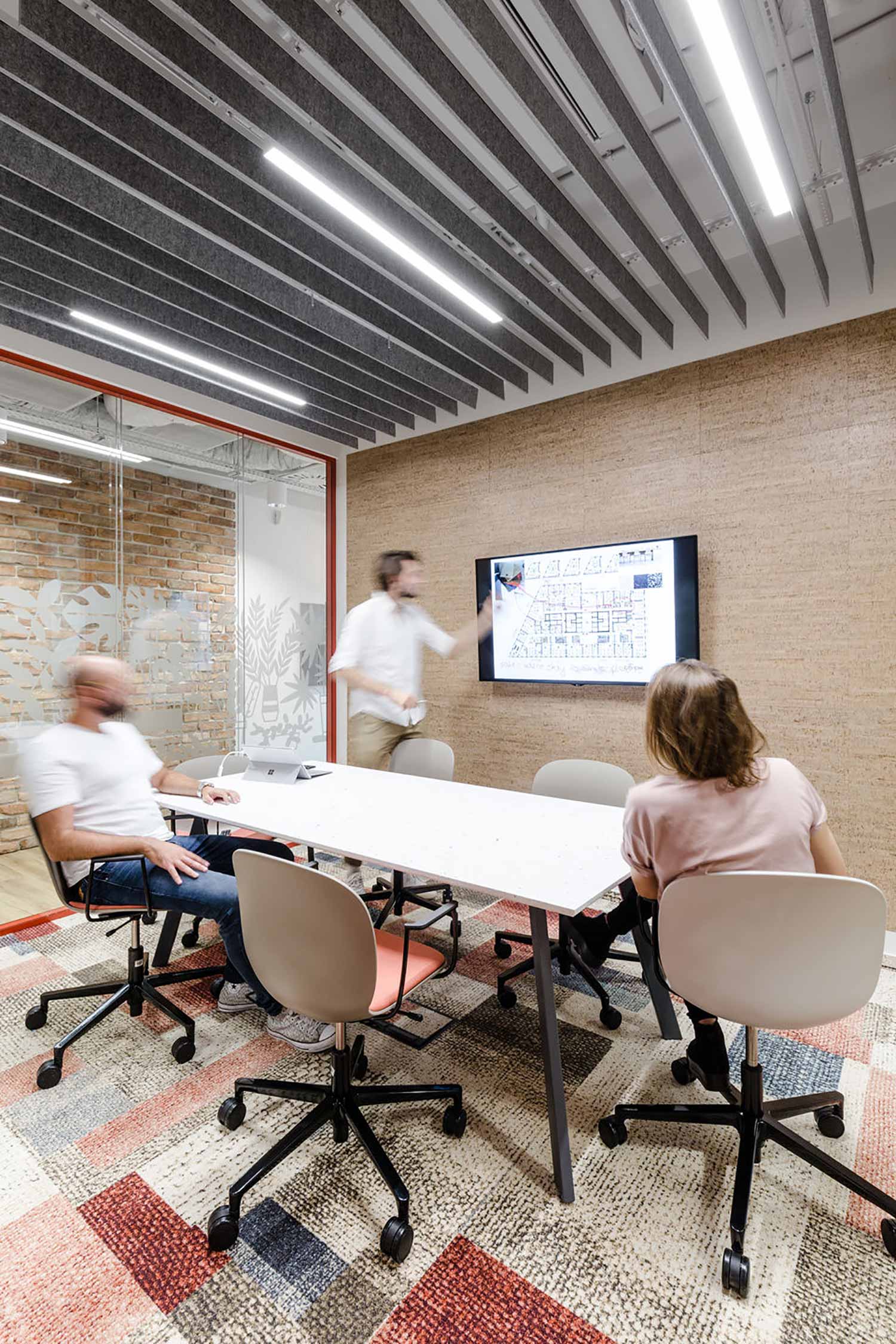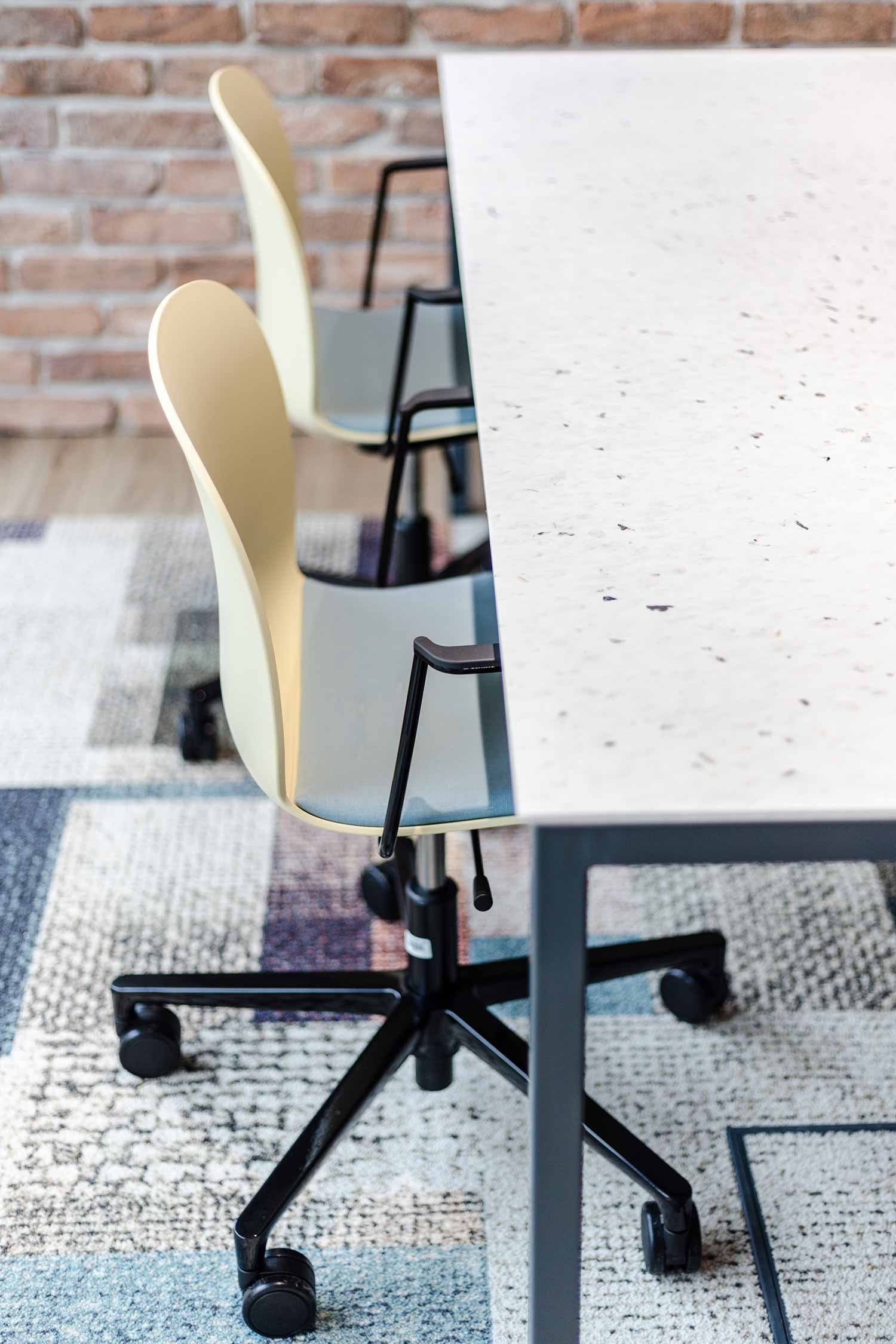“There were no examples of how to apply these practices on a larger, commercial scale, which is something we wanted to change. We decided to pave the way for environmentally friendly to create a working space that complies with this approach.” –Dominika Zielińska, Workplace Solutions
Nordea's ‘Less Waste Office’ in the city of Gdynia is the result of several year’s research and planning by Polish architects Workplace Solutions, designers looking to challenge the architecture industry to find more sustainable solutions to workplace design. Standard office spaces have a 5-10 year life cycle, with most furnishings and equipment becoming waste during this time frame, needing replacement. According to the US Environmental Protection Agency, this process sees 8.5 million tonnes of office assets filling up landfill sites annually, in the US alone.
Their solution to this was to source recycled and recyclable materials and equipment as much as possible, in almost every area of the project, a method that took nearly two years of hard work. In Nordea, the architects found a natural partner to work with on this project, a company equally committed to environmental action, willing to accept the risks of this unique challenge.
Read - How to choose environmentally friendly furniture
The process through which the workspace was designed adheres to the 3R Model – Reduce, Reuse and Recycle. To ensure the process was not only environmentally friendly but also functionally acceptable, they had to meet the client’s wishes of not exceeded previous budgets, timeframes or functionality. That meant it had to be economical, efficient and attractive.
To meet these objectives, the designers had several steps:
Material Research
The first and most important step, involving verification and testing of various supposed ecological solutions, from building materials to sustainable furniture. Whilst this was a time-consuming element, all knowledge gained can be used in future projects.
Reversed Approach
Because this project is based on available resources, it meant first finding the resources available and connecting the available colours, materials and ideas to the applicable dimensions.
Cooperation and focus
Making sure that everyone, including the building owner, subcontractors, furniture suppliers, client, and architects are all aligned that waste reduction is the primary goal. Every solution must create the smallest environmental footprint possible, with the reuse of materials whenever possible.
Watch - Embracing the imperfect - sustainable design talk
Through these measures, 80% of the workplace is composed of recycled and ecological materials. Almost all the electrical and ventilation was refurbished and reinstalled. The team sourced furniture, lamps and decorative elements from second-hand merchants and refurbished. Recycled bricks, eco paints, biodegradable foils, and natural cork insulation boards also feature throughout.
For the other 20%, where new products were the only option, every effort was made to find recycled and recyclable solutions. Flokk brand RBM provided a range of conference and cafeteria seating with the RBM Noor. Made using recycled metals and fully recyclable plastics, these chairs not only offer comfort and support but also are long lasting and fully recyclable, with minimal chance of ending up in a landfill. In the near future, they will also be made using even more recycled materials. These were complemented by tabletops made of recycled plastic packaging and carpets made without harmful bituminous primers.
Read - The truth about chemicals in furniture
This patchwork approach, with designers choosing and sewing materials together creates a unique design. An aesthetic familiar to the client was maintained, with a warmer Scandinavian style featuring a variety of colours, furniture and decorative elements, triggering emotions tied to a cosy home, or favourite café. The visible raw materials like brick, clay and plants complemented this and create a vibe close to nature.
“By creating the Less Waste Office, we wanted to share good practices and educate employees, future clients and the whole design industry. We would like to motivate designers to create new projects that use even more ecological solutions and certified materials... For us, as designers, it’s not a choice but a requirement that will help create a better, sustainable future.” – Dominika Zielińska, Workplace Solutions
Design team behind the 'Less Waste Office': Dominika Zielińska, Małgorzata Romanowicz, Daniel Dziczek
